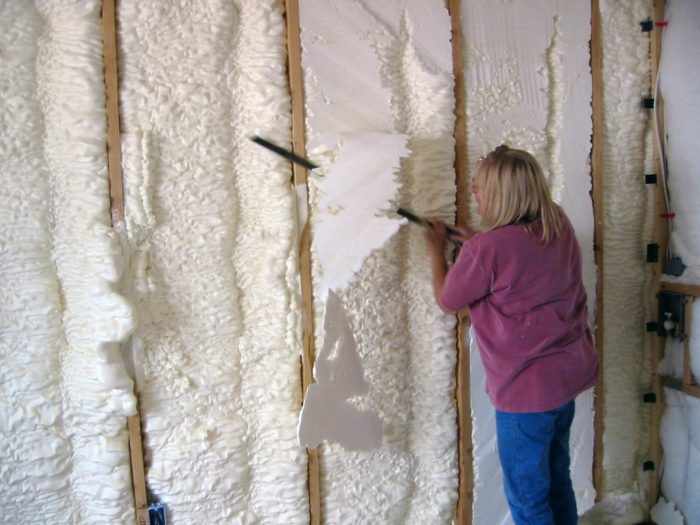
When we think of home insulation, the first thing that usually comes to mind is comfort—keeping the house warm in winter and cool in summer. However, the implications of poor wall insulation extend far beyond just temperature control. Substandard or inadequate wall insulation can significantly impact your health and well-being in ways many people are unaware of.
In this blog, we'll explore how poorly insulated walls can pose serious health risks, the science behind it, and what homeowners can do to protect their families.
Understanding Wall Insulation and Its Role
Wall insulation is designed to reduce the transfer of heat between the inside and outside of a home. Proper insulation helps maintain a stable indoor temperature, reduces energy costs, and minimizes the intrusion of external pollutants and moisture.
When walls are poorly insulated, they allow for thermal bridging—a process where heat escapes through uninsulated or weak points in the wall. This creates cold spots, increases indoor humidity, and sets the stage for a range of health hazards.
1. Mold and Mildew Growth
One of the most immediate health risks associated with poor wall insulation is the growth of mold and mildew. Inadequate insulation often leads to condensation within wall cavities and on interior surfaces. When warm indoor air comes into contact with cold walls, moisture accumulates.
This damp environment becomes a breeding ground for mold spores, which can spread rapidly. Exposure to mold can cause or exacerbate:
Allergies
Asthma
Respiratory infections
Skin irritation
Children, the elderly, and people with weakened immune systems are particularly vulnerable to mold-related illnesses. Even if mold isn’t visibly present, its spores can circulate through the air, leading to long-term exposure.
2. Poor Indoor Air Quality
A well-insulated home not only keeps out unwanted temperatures but also acts as a barrier to outdoor pollutants like dust, pollen, and vehicle exhaust. When walls are poorly insulated, these pollutants can infiltrate the home more easily, compromising indoor air quality.
Additionally, gaps in insulation can allow radon gas—a naturally occurring radioactive gas that seeps from soil—into the home. Radon exposure is the second leading cause of lung cancer after smoking, and because it’s odorless and invisible, it often goes undetected until it’s too late.
3. Increased Respiratory Issues
Poor insulation leads to unstable indoor temperatures, causing HVAC systems to work harder to compensate. The constant fluctuation in temperature can irritate the respiratory system, especially in sensitive individuals.
In winter, cold drafts from inadequately insulated walls can cause dry air to circulate throughout the home. This dry air can irritate the sinuses, dry out mucous membranes, and increase the likelihood of respiratory infections. In summer, overworked air conditioners combined with high humidity levels can also promote allergen growth and respiratory distress.
4. Noise Pollution and Mental Health
While not a direct physical health issue, noise pollution can significantly impact mental well-being. Good insulation doesn't just regulate temperature—it also acts as a sound barrier. Poorly insulated walls fail to block external noise from traffic, neighbors, or street activity, leading to increased stress, sleep disturbances, and reduced overall quality of life.
Chronic noise exposure has been linked to elevated cortisol levels, hypertension, and even cardiovascular issues. A noisy environment disrupts rest and recovery, contributing to long-term mental and emotional strain.
5. Increased Pest Infestations
Another overlooked consequence of Air Source Heat Pump in london poor wall insulation is the increased likelihood of pest infestations. Inadequate insulation often leaves gaps and cracks that serve as entry points for rodents, insects, and other unwanted pests.
These pests can carry diseases and allergens, contaminating your living space. Rodents, for instance, can transmit hantavirus, leptospirosis, and other harmful bacteria. Cockroach droppings are a well-known asthma trigger, especially in children.
6. Disrupted Sleep Patterns
Maintaining a stable, comfortable indoor temperature is crucial for quality sleep. When insulation is lacking, rooms may become too hot or too cold during the night, leading to frequent awakenings and disturbed sleep cycles.
Sleep is vital for physical and mental recovery. Chronic sleep disruption can weaken the immune system, impair cognitive function, and increase the risk of serious conditions like obesity, diabetes, and depression.
7. Energy Stress and Health
High utility bills caused by poor insulation Solar Panel Installation london can indirectly affect health as well. Financial stress related to heating and cooling costs can lead families to underheat or overheat their homes. This kind of energy poverty is particularly dangerous in extreme weather, where inadequate temperature control can lead to heat stroke or hypothermia.
Households forced to compromise on heating may also resort to unsafe alternatives like space heaters, which carry risks of fire and carbon monoxide poisoning.
What You Can Do
Addressing poor wall insulation doesn't just improve your home’s energy efficiency—it’s an investment in your health. Here are some steps you can take:
Get a professional home energy audit. This will help you identify areas where insulation is lacking or failing.
Upgrade to modern insulation materials. Spray foam, fiberglass, and cellulose are all effective options, depending on your home's structure and budget.
Seal cracks and gaps. Pay attention to wall joints, window frames, and electrical outlets.
Improve ventilation. Make sure your home has proper airflow to prevent moisture buildup.
Monitor humidity levels. Use a dehumidifier if necessary to keep levels between 30–50%.
Conclusion
Poor wall insulation is more than warm home grant just an energy issue—it’s a health issue. From respiratory problems and mold exposure to increased stress and sleep disruption, the risks are real and multifaceted. If you’ve been experiencing unexplained health symptoms or discomfort in your home, your insulation could be to blame.
Investing in proper wall insulation can lead to a safer, healthier, and more comfortable living environment for you and your loved ones. It’s a change that pays off not just in savings, but in overall well-being.


Write a comment ...